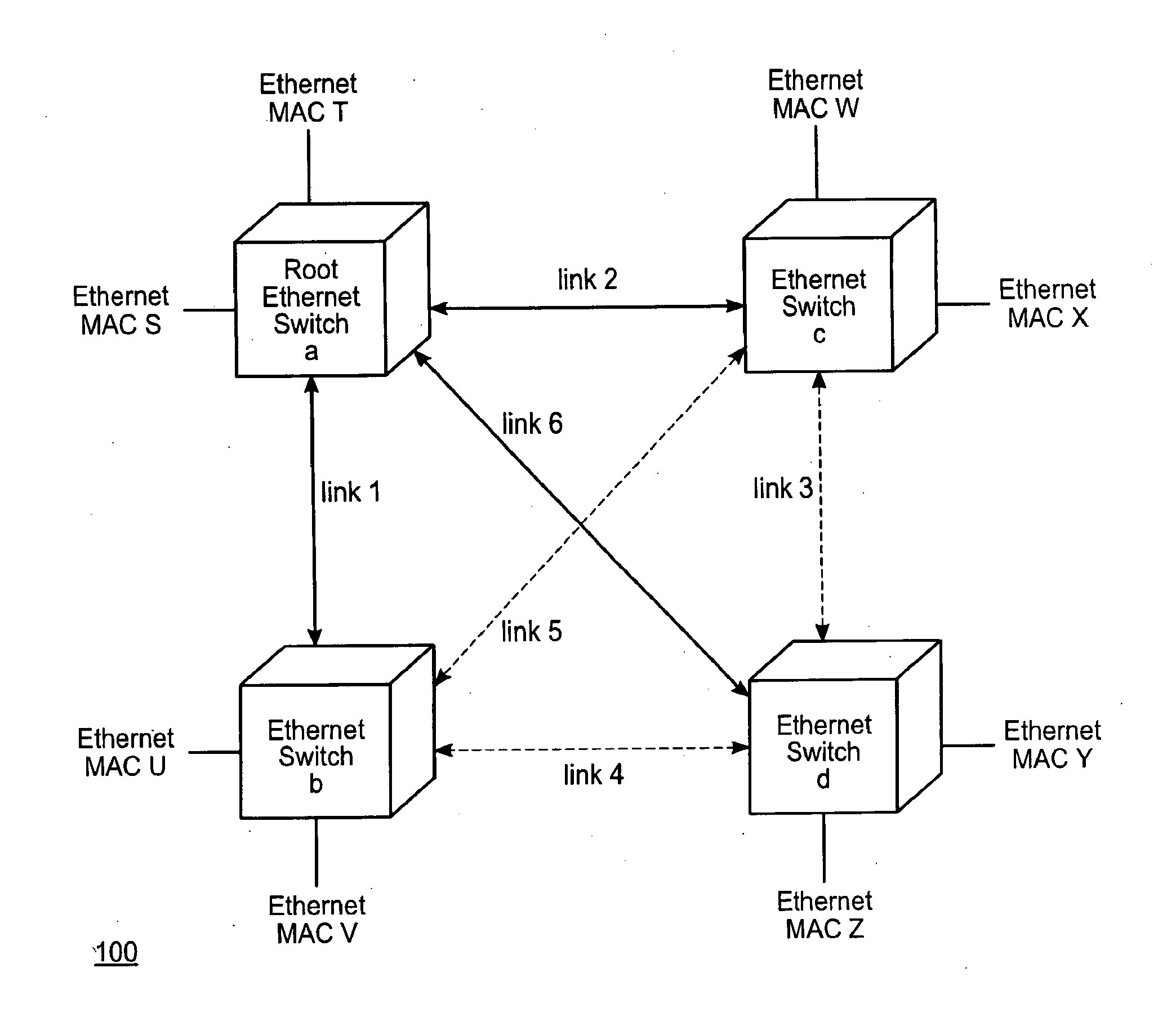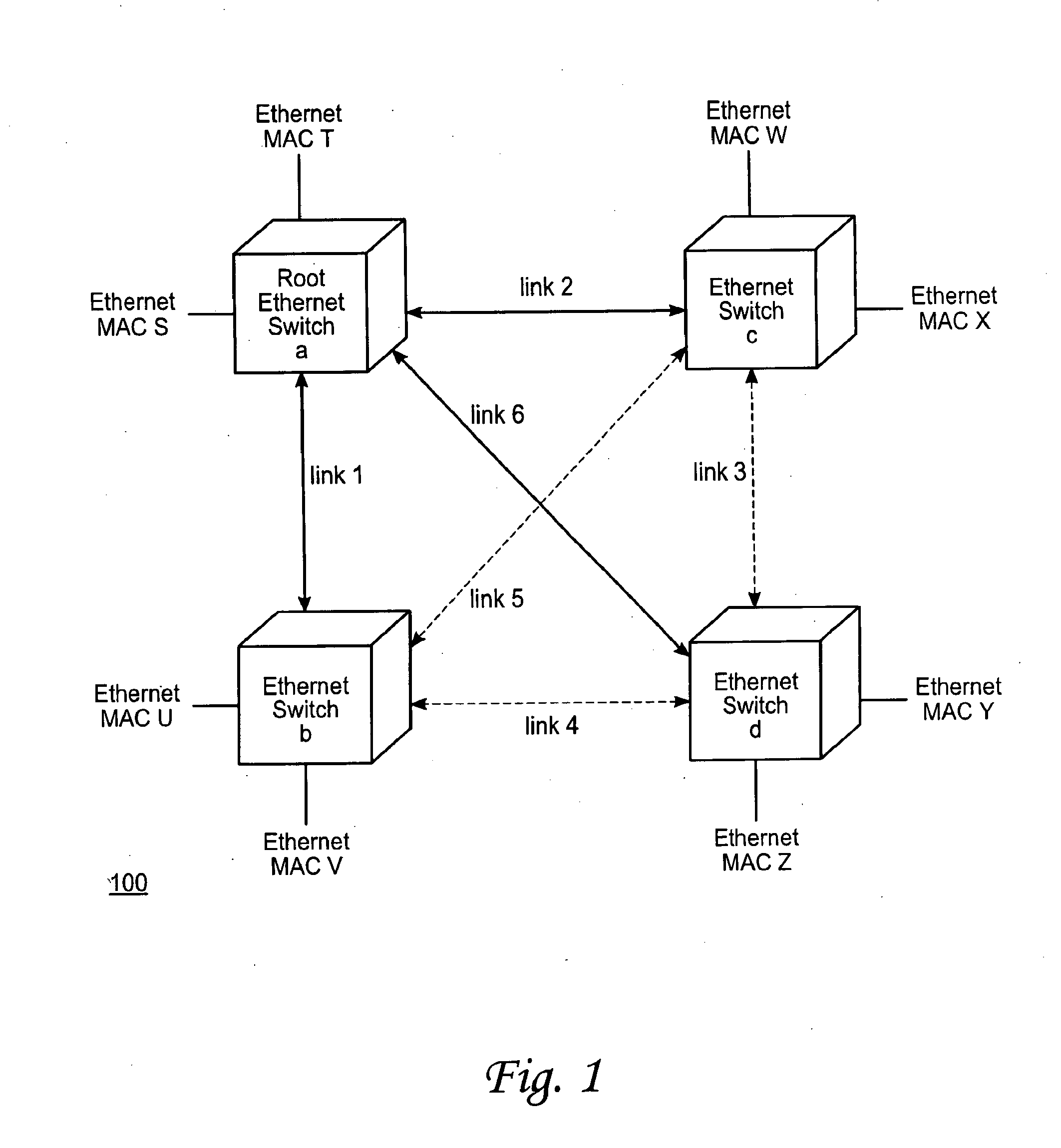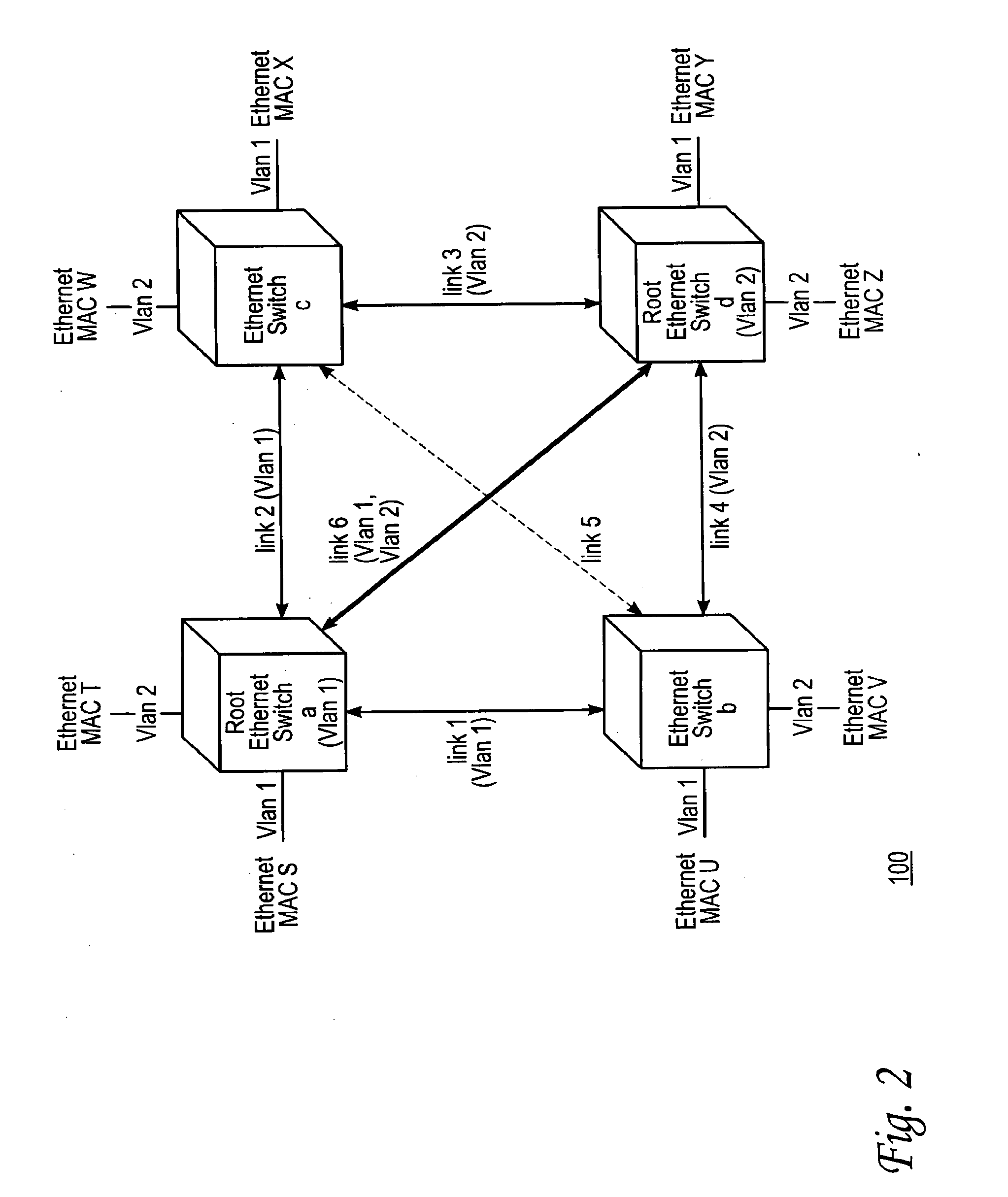Performing rate limiting within a network
a technology of network performance and rate limitation, applied in the field of computer networking, can solve the problems of underutilized network switching capacity, network failure recovery time is not as fast, and the switching capacity of the network is underutilized,
- Summary
- Abstract
- Description
- Claims
- Application Information
AI Technical Summary
Benefits of technology
Problems solved by technology
Method used
Image
Examples
Embodiment Construction
[0028]Methods and systems are described for performing rate limiting. One embodiment of the present invention is implemented in a loop-free switching path, reverse path learning network, such as an Ethernet network. Before describing this embodiment in detail, some additional information on Ethernet networks will be provided to facilitate a complete understanding of the invention.
Ethernet Networks
[0029]FIG. 1 shows a sample Ethernet network. As shown, the network 100 comprises four Ethernet switches a, b, c, and d. The switches are connected to each other by links 1 through 6. Coupled to each switch are two end nodes, identified by their Ethernet MAC (media access control) addresses. Specifically, switch a is coupled to the nodes with MAC addresses S and T. Switch b is coupled to the nodes with MAC addresses U and V. Switch c is coupled to the nodes with MAC addresses W and X, and switch d is coupled to the nodes with MAC addresses Y and Z.
[0030]In an Ethernet network, the path betw...
PUM
 Login to View More
Login to View More Abstract
Description
Claims
Application Information
 Login to View More
Login to View More - R&D
- Intellectual Property
- Life Sciences
- Materials
- Tech Scout
- Unparalleled Data Quality
- Higher Quality Content
- 60% Fewer Hallucinations
Browse by: Latest US Patents, China's latest patents, Technical Efficacy Thesaurus, Application Domain, Technology Topic, Popular Technical Reports.
© 2025 PatSnap. All rights reserved.Legal|Privacy policy|Modern Slavery Act Transparency Statement|Sitemap|About US| Contact US: help@patsnap.com



